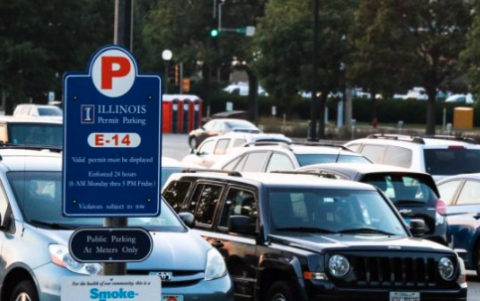You are here
City Traffic as a Reservoir System (In Progress)
Recent Project Updates
No project updates found
Project Family
-
iSEE Campus as a Living Lab (CALL) Projects
- Adaptive Aluminum Tensegrity Structure as a Bike Parking Canopy
- Addressing Community Health Disparities from Hazardous Waste
- Agrivoltaics: Crop Production and Solar Panels on the Same Land
- City Traffic as a Reservoir System
- Creating Adaptable Autonomous Systems for Energy-Efficient Buildings
- Environment-Enhancing Food, Energy, and Water Systems
- Faculty/Staff Crowdsourced Community Program
- Geothermal: Thermo-Hydraulic Properties of Glacial Tills
- I-PLACES Living Laboratory
- Integrating Groundwater Resources and Geothermal Energy for Water-Energy Security and Resilience
- Student Mobility on and around the Illinois campus
- Testing Geopolymer Performance in a Geothermal Exchange System
- Thermochemical Batteries: Turning Waste Heat into an Energy Source
- Towards Zero Waste: Automated Waste Classification via Computer Vision
- Wind Turbine/Pavilion Integration for Electricity Generation
Associated Collections
Description
Funded in Spring 2020, this project will introduce and test a method of inferring traffic accumulation (number of vehicles circulating in an area) from the measured flow of traffic in, out, and around major parking facilities.
Researchers will combine traffic theory, traffic detection, data science, and statistics to reduce the amount of time cars spend idling — and thus transportation-related emissions. The team will use uncertainty quantification methods in its modeling to help more accurately count vehicles in one of three “reservoirs”: outside the zone, parked, and circulating on streets near the parking facility.
Background
Purpose of the Work: Campus Connection
Using iSEE seed funding, the team is working with Facilities & Services (F&S) to select a major parking facility zone on the U of I campus, place traffic detectors (cameras) along its periphery and at its entrances and exits, and feed the data into computer vision algorithms to measure traffic accumulation (number of vehicles circulating) and flow. This accumulation and flow data can be used for transportation planning and interventions to traffic signals that reduce time idling, thus reducing greenhouse gas (GHG) emissions related to driving.
The team expects to attract external funding through the National Science Foundation Cyber Physical Systems (CPS) program.
Project Team
-
Project Leader:
Lewis Lehe, Assistant Professor, Civil and Environmental EngineeringTeam Members:
- Co-PL: Alireza Talebpour, Assistant Professor, Civil and Environmental Engineering
- Co-PL: Hadi Meidani, Assistant Professor, Civil and Environmental Engineering
Themes
-
Primary Theme:

